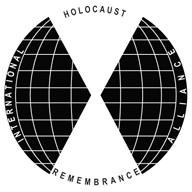“We share a commitment to throw light on the still obscured shadows of the Holocaust.”
-- Declaration of the Stockholm International Forum on the Holocaust
 INTERNATIONAL HOLOCAUST REMEMBRANCE ALLIANCE
INTERNATIONAL HOLOCAUST REMEMBRANCE ALLIANCE
“We share a commitment to throw light on the still obscured shadows of the Holocaust.”
-- Declaration of the Stockholm International Forum on the Holocaust
The Holocaust and The United Nations Outreach Programme is celebrating the success of two youth-focused initiatives using 'Twitter' and video-conferencing technologies.
In observance of Yom Ha Shoah on April 11, 2010 The Holocaust and the United Nations Outreach Programme launched the "Anne Frank Twitter Campaign" in partnership with the Anne Frank Center USA. It was designed as a way to encourage young people to pay tribute to this courageous girl, who died 65 years ago this March in Bergen-Belsen. Visits to the Holocaust and the United Nations Outreach programme website more than doubled during the campaign.
The campaign encouraged young people to remember how Anne Frank spent the final months of her life, and to learn from her experience. The students were asked to imagine that Anne Frank had a way to receive electronic messages while in hiding from the Nazis, without being discovered. They were invited to "tweet" messages of support to Anne and share their thoughts with her about what they have learned from her life. Students of all ages around the world participated by posting some 350 "tweets" in ten languages on the programme's Twitter site.
Continuing with their focus on young people, on April 21, 2010 The Holocaust and the United Nations Outreach Programme in partnership with the United States Holocaust Memorial Museum held its first video conference in Spanish with students in seven Latin American Countries to promote Holocaust education. United Nations Information Centres in Asuncion, Bogota, Buenos Aires, La Paz, Lima, Mexico City and Panama City brought more than 250 local high school students from 12 schools together to hear the personal testimony of Holocaust survivor Margit Morawetz Meissner, who spoke to them from the Museum in Washington, D.C. Ms. Meisner escaped France with her mother at age 16 via Spain and Portugal, finally settling in the United States.
Prior to the video conference, the United Nations Information Centres briefed the students on the history of the Holocaust, using tools such as the United Nations Holocaust Programme's Footprints for Hope kit. The kit includes a film titled Footprints: Discovering the Holocaust through Historical Artefacts, a lesson plan, and a PowerPoint presentation produced with the UK Holocaust Centre and the Institute of Education at the University of London. The UN Centres were able to utilize the Spanish-language materials posted on the Programme's online pedagogical resource: the "Electronic Notes for Speakers", produced in partnership with the Museum in D.C.
Information provided by UNHOP.